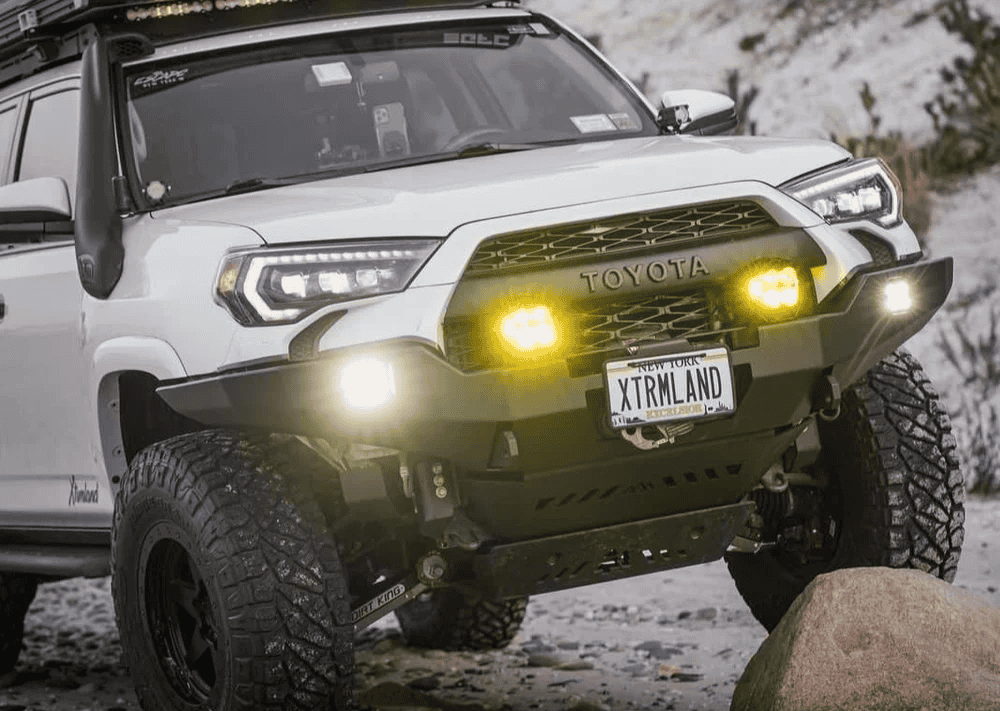Overland Vehicles

Accurate 3D layout design for overland starts with human scale. Measure seated height, reach zones, and walking lanes, then convert that into a cabin grid. Every inch matters once you add cabinetry, water tanks, and a sleeping platform. A good model shows how doors swing, drawers clear, and feet land when you step inside at night with boots on.
3D layout design for overland interior showing modular storage, power system, and weight balanced floor plan
Weight and balance decide how a rig drives. Model each component with an estimated mass and place it in relation to the axles. The goal is to keep the center of gravity low and close to the longitudinal centerline. In practice, that means heavy battery banks, water, and recovery gear live low and near mid ship, while lighter items like clothing go higher. The model helps you keep axle loads under the ratings and prevents a nose heavy or tail heavy feel.
Traffic flow is another early decision. Define zones for cooking, sleeping, and storage. A galley near a slider door makes outdoor cooking easy while minimizing smoke inside. A foldable bed system can clear floor space for bikes or skis. Use the 3D scene to check that two people can pass without shoulder bumps, even with winter layers on.
Modularity pays off on long trips. Design bolt in furniture with consistent hole patterns and shared fasteners. When the mission changes, you can swap a rear bench for a gear module without reengineering the cabin. The model becomes a library of parts that can be recombined for different routes and seasons.
Power planning is easiest when the model guides the routes. Sketch the main positive and negative runs, fuse block locations, and service loops. Keep high current cables short, well protected, and away from sharp edges. Reserve airflow paths for inverters and chargers, and confirm that cooling vents are not blocked by a bed panel or a duffel. A labeled 3D diagram becomes the blueprint for wire gauges, circuit IDs, and maintenance access.
Water and sanitation need volume and weight awareness. Place fresh tanks near the center and low. Gray tanks should mount safely with bracing that handles slosh loads. Map every hose run, valve, and vent in the model to confirm no pinch points and easy winterization. A few extra inches around a pump makes troubleshooting painless on the road.
Thermal and acoustics are often overlooked. Use the model to calculate insulation coverage and identify metal ribs that could bridge heat or cold into the cabin. Plan vapor barriers, window covers, and vent placement for cross flow. A quiet, well ventilated layout reduces fatigue on long stretches and helps components last longer.
Storage should be purpose built. Model cases and bins at their real sizes, then assign them to cabinets and tie down points. Heavy items like recovery gear deserve steel anchors tied into structure. Lighter bins can use latches and soft ties. Use vertical space wisely with removable shelves and netting. The model confirms that large items load and unload without awkward angles.
Accurate geometry begins with data capture. Measure the shell with a tape set and digital calipers, or scan interior surfaces with a lidar device. Clean up the point cloud and build parametric reference planes for the floor, wheel tubs, and body curves. Now every cabinet and bracket references real surfaces instead of guesswork.
Tool choice depends on goals. SketchUp is fast for spatial layouts and concept iterations. Fusion and similar parametric CAD tools shine when you need precise hardware, brackets, and flat patterns for fabrication. Whichever you choose, set a consistent unit system, layers, and part naming to keep the project tidy from day one.
Iteration is where the model earns its keep. Test a two person bed width, then compare to a three panel design. Move the galley ten centimeters and see how it affects aisle width and toe clearance. Render sight lines to confirm you can reach a window crank or the dimmer without stretching. If you have access to VR, walk the cabin at actual scale to catch tight corners that a screen can hide.
Validation closes the loop. Run a weight report from the model, including fluids and full gear. Check axle loads and confirm you have reserve capacity for future changes. Create drawings for every assembly, specify materials and fasteners, and export cut files for panel routing. Clear documentation turns a digital plan into a clean, repeatable build.
You can plan every inch in 3D and still want a seasoned team to turn pixels into parts. That is where a professional shop matters. If you want a capable platform with thoughtful packaging and trail first ergonomics, explore our overland rigs. For a tailored interior and systems fit to your routes and gear, review our custom overland upfit approach. Curious about process, materials, and client experience from concept to delivery, see Why choose OZK Customs.
Our team plans with clear space claims, measured cable paths, and defined service access. We balance weight where it belongs and document every mount so the final rig looks right and drives better. Bring your trip goals and non negotiables, and we will turn a practical 3D plan into a road proven cabin.
If your routes are set and your gear list is dialed, let us translate that into a model and a finished build that matches. Share your timeline and how you travel. We will propose smart layout options, define cost and lead time, and deliver a rig that feels as good as it looks.
Ready to see your overland interior in full 3D with correct clearances and smart weight balance? Share your trip goals, gear list, and timeline. Our team will turn that into an actionable plan, transparent pricing, and a build that matches the model. Fill out the form and let us design the rig you have in mind.
ADDRESS:
6159 E Huntsville Rd, Fayetteville, AR 72701
PHONE:
(479) 326-9200
EMAIL:
info@ozkvans.com